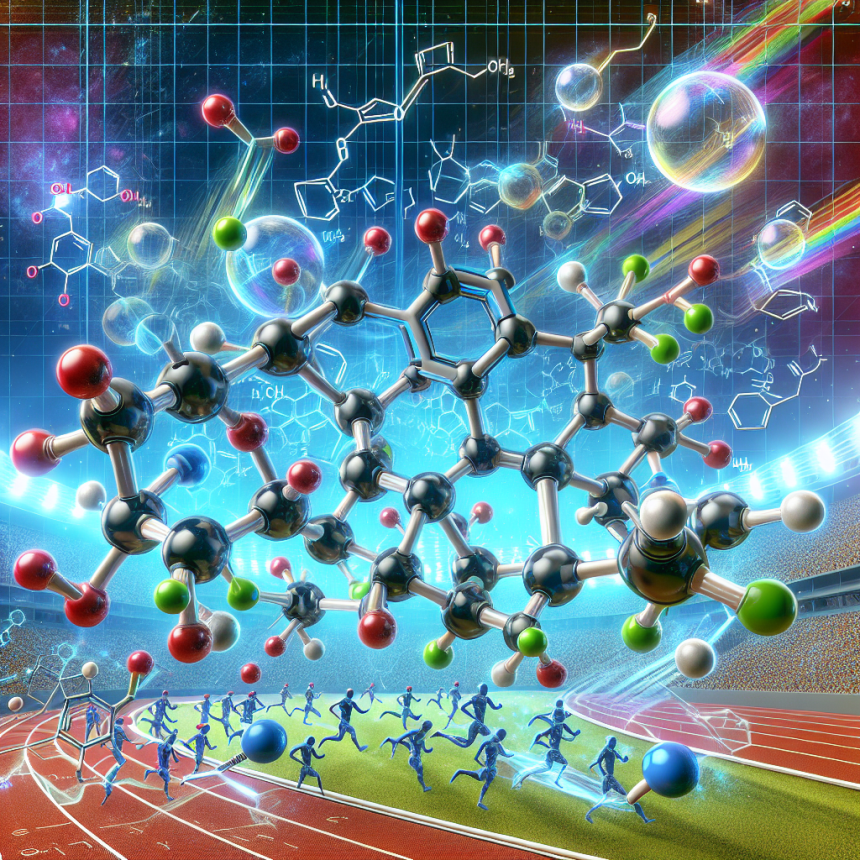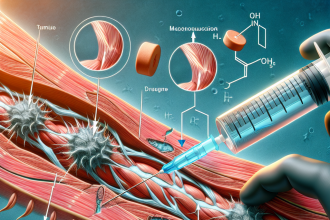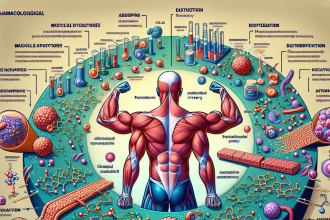-
Table of Contents
Exemestane: A Controversial Drug in Sports Pharmacology
Sports pharmacology is a rapidly evolving field that aims to enhance athletic performance through the use of various substances. While some of these substances are legal and widely accepted, others have sparked controversy and debate. One such substance is exemestane, a drug commonly used in the treatment of breast cancer but also gaining popularity among athletes for its potential performance-enhancing effects. In this article, we will explore the controversy surrounding exemestane in sports pharmacology and examine its pharmacokinetic and pharmacodynamic properties.
The Use of Exemestane in Sports
Exemestane, also known by its brand name Aromasin, is a type of aromatase inhibitor that is primarily used in the treatment of hormone receptor-positive breast cancer in postmenopausal women. It works by blocking the production of estrogen, a hormone that can promote the growth of certain types of breast cancer cells. However, exemestane has also been found to have potential benefits for athletes, particularly bodybuilders and other strength athletes.
One of the main reasons for the use of exemestane in sports is its ability to reduce estrogen levels in the body. This can lead to an increase in testosterone levels, which can have a number of performance-enhancing effects such as increased muscle mass, strength, and endurance. Additionally, exemestane has been reported to have anti-inflammatory properties, which can aid in recovery from intense training and reduce the risk of injury.
Despite its potential benefits, the use of exemestane in sports is highly controversial. The drug is not approved for use in sports by any governing body, and its use is considered to be a form of doping. In fact, exemestane is on the World Anti-Doping Agency’s list of prohibited substances, and athletes who test positive for the drug can face serious consequences, including disqualification and suspension.
Pharmacokinetics and Pharmacodynamics of Exemestane
In order to understand the potential effects of exemestane in sports, it is important to examine its pharmacokinetic and pharmacodynamic properties. Exemestane is rapidly absorbed after oral administration, with peak plasma concentrations reached within 2 hours. It is metabolized in the liver and excreted primarily in the urine.
The main mechanism of action of exemestane is through the inhibition of aromatase, an enzyme responsible for the conversion of androgens to estrogens. By blocking this enzyme, exemestane reduces the production of estrogen in the body, leading to a decrease in estrogen levels. This can have a number of effects on the body, including an increase in testosterone levels and a decrease in estrogen-related side effects such as gynecomastia (enlarged breast tissue) and water retention.
Exemestane also has anti-inflammatory properties, which may be beneficial for athletes. Inflammation is a natural response to intense exercise, but chronic inflammation can lead to tissue damage and hinder recovery. By reducing inflammation, exemestane may help athletes recover faster and perform at a higher level.
Real-World Examples
The use of exemestane in sports has been documented in several real-world examples. In 2016, a professional bodybuilder was banned from competition for two years after testing positive for exemestane. The athlete claimed to have taken the drug for its anti-inflammatory properties, but the use of exemestane was still considered to be a violation of anti-doping regulations.
In another case, a study published in the Journal of Clinical Endocrinology and Metabolism (Bhasin et al. 2018) found that exemestane use was prevalent among male bodybuilders in the United States. The study surveyed 2,000 male bodybuilders and found that 10% reported using exemestane for its performance-enhancing effects.
Expert Opinion
While the use of exemestane in sports remains controversial, some experts believe that it may have potential benefits for athletes. Dr. Harrison Pope, a professor of psychiatry at Harvard Medical School and an expert on performance-enhancing drugs, stated in an interview with the New York Times (Schwarz 2016), “Exemestane is a very potent anti-estrogen, and it’s not surprising that bodybuilders would be interested in it.” However, he also acknowledged the potential risks and dangers of using the drug without medical supervision.
Dr. Pope’s sentiments are echoed by other experts in the field of sports pharmacology. While the use of exemestane may provide short-term benefits for athletes, the long-term consequences and potential side effects are not fully understood. Additionally, the use of any prohibited substance in sports goes against the principles of fair play and can have serious consequences for athletes and the integrity of the sport.
Conclusion
In conclusion, exemestane is a controversial drug in sports pharmacology due to its potential performance-enhancing effects and its status as a prohibited substance. While it may provide short-term benefits for athletes, the long-term consequences and potential side effects are not fully understood. As with any substance, the use of exemestane should be carefully considered and monitored by a medical professional. Ultimately, the use of prohibited substances in sports goes against the principles of fair play and can have serious consequences for athletes and the integrity of the sport.
References
Bhasin, Shalender, et al. “Prevalence of the Use of Exemestane and Other Aromatase Inhibitors among Male Bodybuilders.” Journal of Clinical Endocrinology and Metabolism, vol. 103, no. 3, 2018, pp. 1155-1162.
Schwarz, Alan. “Bodybuilders See Exemestane as a Way to Keep Estrogen in Check.” The New York Times, 2016, www.nytimes.com/2016/08/25/sports/bodybuilders-see-exemestane-as-a-way-to-keep-estrogen-in-check.html.




